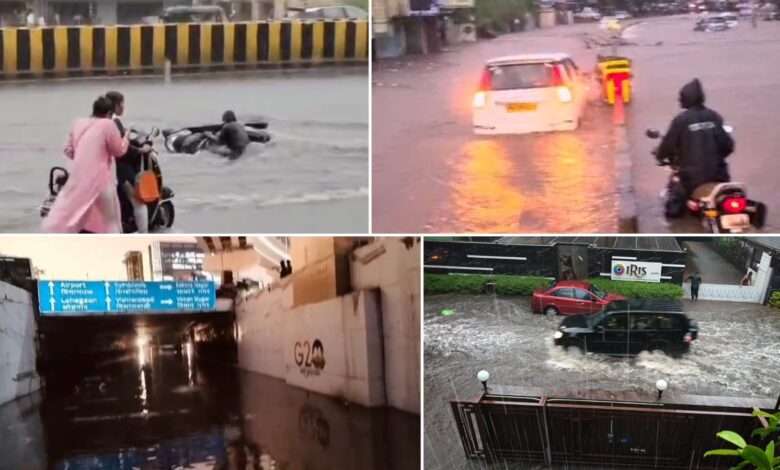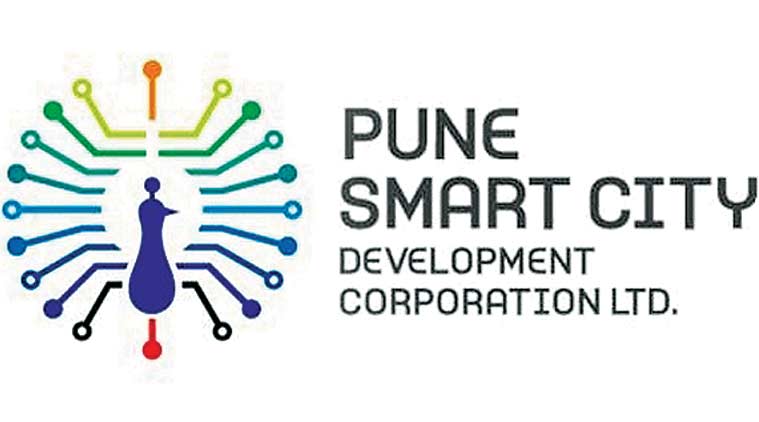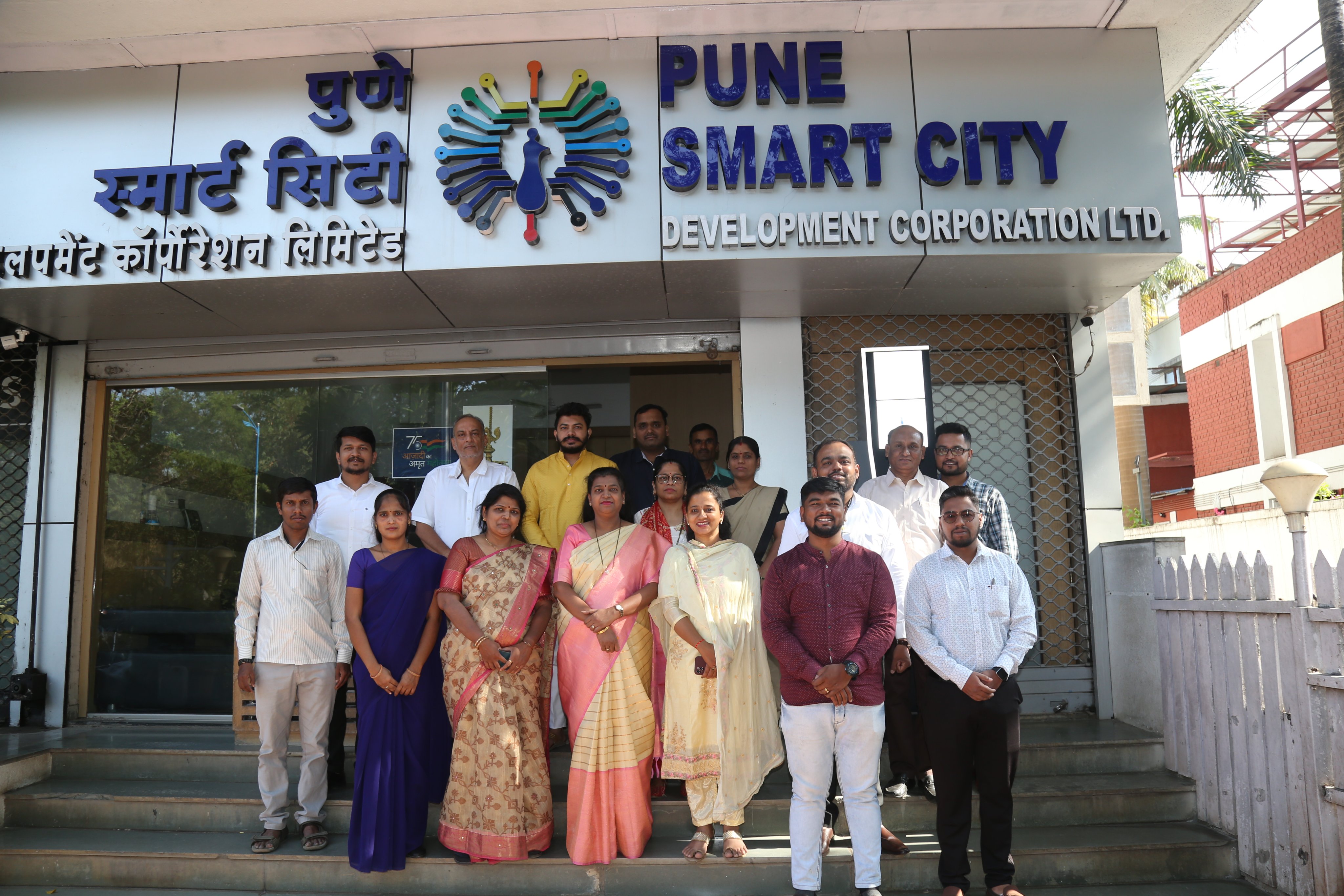From Smart City To Scrapped City, Pune Finds Itself Abondoned As Smart City Project Dropped After Collosal Spending Of Rs. 1148 Crore; Tax Payers Money In Waterlogged Streets, The Biggest ‘Jumla’ Yet!
Building 100 smart cities was an election promise of the Bharatiya Janata Party in 2014. After coming to power, the Modi government allocated Rs 7,060 crore for this purpose in its first budget. It formally launched the Smart Cities Mission in June 2015, with an allocation of Rs 48,000 crore. Over the next two years, 100 cities were selected for central grants of Rs 500 crore each; however, Pune has been dropped from the list due to a shortage of funds, or was it a lack of effective management?

The Modi Years: How close is India to getting Smart Cities even as Pune has dropped off the list?
When PM Narendra Modi launched the Smart Cities Mission in June 2015, the entire nation wanted to know if their respective “abodes” fell into the “Urban Revolution” category.
The main objective of the mission is/was to promote cities that provide core infrastructure, a clean and sustainable environment, and decent quality of life to their citizens through the application of smart solutions.
For those living in Pune, the ambitious Smart City project, was launched with much fanfare in 2016 by the Bharatiya Janata Party (BJP), aimed to revolutionize urban infrastructure in Pune.
Well, from the recent deluge in Pune, the mini floods of sorts that wreaked havoc in many parts of the city, it is safe to gauge that the Smart City Initiative utterly “failed”!
To add more angst to the problem comes the news that the initiative is now being wrapped up due to funding shortages and failed initiatives.
This despite initial successes, the project has ultimately fallen short of its lofty goals!

From Initial Success To Utter Failure, Smart City At A Time
The Pune Smart City Development Corporation Limited (PSCDCL) was established to spearhead this grand endeavour; over eight years, PSCDCL managed to execute 45 projects worth ₹1,148 crores.
The initiative included a variety of elements aimed at enhancing urban living, (ahem!) such as Variable Message Displays (VMDs), 157 VMDs installed across the city to provide real-time information to citizens, Integrated Control Center, a hub for monitoring and managing city operations and Adaptive Traffic Management System (ATMS): Designed to optimize traffic flow and reduce congestion.
These components were part of a broader vision to develop the Baner-Balewadi area, incorporating advanced traffic signal systems, parks, and other urban amenities.
However, as mentioned, significant hurdles led to the project’s premature conclusion and one of ther main reasons cited for the same – severe funding shortages.
The government withheld ₹58 crore in interest from the funds allocated to the Smart City, critically impacting several ongoing projects. This decision led to demands from the state’s urban development department for the release of these withheld funds.
However, the financial constraints proved insurmountable, leading to incomplete projects and unmet objectives.
What are some other details?
With the Smart City project wrapping up, the municipal corporation has been responsible for the existing Smart City assets.
Additional Commissioner Prithviraj BP is now tasked with overseeing the transition, which includes inspecting and managing these assets.
Some of the key assets being transferred include –
Variable Message Displays (VMDs): An evaluation of their operational status will be conducted, and tenders will be issued to generate revenue from these assets.
Integrated Command and Control Center and ATMS: These systems will also be assessed and managed by the municipal corporation.
The transition aims to ensure that the investments made so far are not wasted and that the city continues to benefit from the infrastructure developed under the Smart City initiative.

The Jumla
Critics slammed the BJP government’s smart city project by calling it a “jumla” as they claimed that it will not help in solving the real issues plaguing the common man.
Under the Smart City project, these were the cities that were chosen *
Now that you have seen the list, what do you think, smart cities yet?
According to the latest update, the Ministry of Housing and Urban Affairs said on Tuesday that 7,160 projects worth Rs 1.43 trillion under the Smart Cities Mission have been completed so far, while another 854 projects worth Rs 20,392 crore are in advanced stages of completion.
The centre has released Rs 46,387 crore to 100 cities, and the Ministry said 93 per cent of the released funds have been utilised.
“Today marks a significant milestone as India celebrates the 9th anniversary of the Smart Cities Mission, launched on 25th June 2015 by Prime Minister Narendra Modi. Over the past nine years, the mission has emerged as a beacon of urban transformation, enhancing the quality of life across 100 cities through 8,000+ multi-sectoral, innovative projects valued at approximately Rs 1.6 lakh crore,” the Ministry said.
“As of June 25, 2024, 7,160 projects worth Rs 1.43 trillion had been completed and another 854 projects worth Rs 20,392 crore are in advanced stages of completion. The Government of India (GOI) has released Rs 46,387 crore to 100 cities. 93 per cent of released GOI funds have been utilized,” the Ministry added.
Among key achievements under Smart Cities Mission, there is operation Integrated Command and Control Centres (ICCC), the installation of 76,000 CCTV across 100 cities, the installation of 1,884 emergency call boxes, and 3,000 public address systems.
The Ministry further said more than 6,800 km of water supply systems are being monitored through SCADA, reducing the non-revenue water and leakages.
“Around 4,800 vehicles across 50+ smart cities have been RFID enabled for Automatic Vehicle Location (AVL) to improve solid waste management in addition to innovative technologies deployed to improve Route Management, Collection and Daily Management,” the Ministry said.
Under the smart cities mission, more than 50 lakh Solar/LED streetlights have been installed and over 89,000 kms of underground electricity cabling constructed.
Under the mission, there has been the development of 12,300 kms of smart roads and 2500+ km of cycle tracks, alongside the Intelligent Transport Management System (ITMS), which has streamlined traffic operations and journey times.
Moreover, 44,054 Dwelling Units have been constructed so far and 6,312 rooms built in community housing projects like Rain Basera, Hostel (non-educational), night shelters, etc.
As per the Ministry, more than 1,300 parks, green spaces and lakefront/riverfront promenades developed/ being developed.
However, what report card will a common man give despite the above numbers?

What Was Promised And What Is Delivered
- Under the Smart City Initiative, the core infrastructure was promised to include an assured supply of water, power, sanitation, solid waste management, public transport, and affordable housing, “especially for the poor.”
- Smart solutions were expected to be technology-based interventions, such as traffic management using cameras and public transport systems enhanced by mobile applications and GPS.
However, critics have argued that the mission would only create “smart enclaves” rather than comprehensive improvements.
The Centre for Policy Research’s analysis indicated that in the selected cities, small portions of land benefiting a limited segment of the population and were set to consume about 80% of the total funding allocated under the Smart City Mission.
Furthermore, the Housing and Land Rights Network, a non-profit organization, has found that many of the winning cities’ proposals lacked provisions for marginalized communities and do not even mention affordable housing.
Progress in implementing the mission has been slow, with only 1.83% of the funds released by the government utilized in most cases until 2018.
How were the cities selected?
In 2015, the Ministry of Urban Development invited municipal corporations and state governments to submit proposals outlining the smart city projects they intended to implement.
The Ministry limited the number of cities that could be selected from each state based on its population size and the number of towns.
In January 2016, twenty cities were selected in the first round, followed by three more rounds in September 2016, June 2017, and January 2018, ultimately totaling 100 cities. The total number of approved projects stands at 5,151.
How Were Smart City Projects To Be Funded?
The cost of winning proposals for Smart City projects ranges significantly, from just over Rs 777 crore for Port Blair to around Rs 6,200 crore for Chandigarh, later revised to Rs 5,600 crore.
Each selected city receives Rs 500 crore in central funds, matched equally by the state, as seed funding. The cities must independently raise the remaining funds to implement their plans.
The Ministry’s document on Smart City financing lists several methods for local bodies to raise funds, including user charges, public-private partnerships, borrowing from financial institutions, municipal bonds, and convergence with other schemes.
For example, the Pune Municipal Corporation issued municipal bonds in June 2017, which resulted in increased taxes and user charges. In Udaipur, citizens protested against a fivefold increase in water and electricity charges.
According to the Centre for Policy Research, almost 70% of the funds for these projects are sourced from public sources. Over successive rounds, winning proposals have shown a “reduction in reliance on market-based sources of finance.”
Forms of Smart City Development
Smart City development could take two main forms: area-based development, which focuses on small urban pockets, and pan-city development, which extends improvements across the entire city.
Area-based development can include:
- Retrofitting: Installing services and utilities within an existing colony.
- Redevelopment: Demolishing and rebuilding existing developments.
- Greenfield projects: Developing smart areas in previously vacant land.
For instance, Bhubaneswar has mainly focused on retrofitting, while Bhopal has undertaken a complete redevelopment of its project area.
Pan-city development generally involves using technology, information, and data to improve services. This often includes mobile app-based, GPS-enabled public transport and bike-sharing systems.
According to the Ministry’s website, area-based development projects across the 100 cities are worth Rs 1,64,204 crore, while pan-city projects total Rs 38,914 crore.
This disparity has led the Housing and Land Rights Network to criticize the initiative as a “smart enclave scheme.”
Their analysis shows that the percentage of the total city area covered by area-based development varies widely, from 61% in Kavaratti, Lakshadweep to just 0.3% in Ludhiana, Punjab.
Consequently, the impacted population also varies greatly, from 77% in Port Blair, Andaman and Nicobar Islands, to just 0.8% in Pune.
In Chandigarh, the city with the highest budget outlay for Smart City projects, a single sector receives 90% of the proposed Rs 5,600 crore budget.
Who Runs Smart Cities?
To implement smart city projects, each winning city must establish a “Special Purpose Vehicle” (SPV) in the form of a company under the Companies Act 2013.
Special purpose vehicles were also used under the Jawaharlal Nehru National Urban Renewal Mission, a precursor to the Smart Cities Mission. Multiple companies were created to implement specific infrastructure projects.
Under the Smart Cities Mission, however, a single company is formed to handle all types of projects within a particular city.
For example, the Bhopal Smart City Development Corporation oversees everything from roads, sanitation, and housing to parking in specific areas of the city, removing these responsibilities from the Bhopal Municipal Corporation.
Each company’s board comprises nominees from the Government of India, the state government, and the municipal corporation.
Private parties and financial institutions investing in the company can also be members, provided the government retains majority control. Notably, the SPV does not require any elected representatives.
Urban development experts and activists argue that this setup could create a conflict with the municipal corporation, an elected body accountable to the public.
“The Smart City Mission appears to bypass the democratic process,” says Persis Taraporevala, a researcher currently pursuing her PhD on the subject.
In Bhopal, there has been friction between the smart city corporation and local politicians. However, in Pune, elected representatives have been included on the board.
Activists worry that municipal functions will gradually shift to the Smart City company, and private members on the board could gain enough influence to impact all aspects of governance.

Who Gets Space in Smart Cities?
The Housing and Land Rights Network reviewed smart city proposals from a human rights perspective and identified concerning approaches towards migrant laborers and the homeless.
While some cities proposed building shelters and low-cost housing, others advocated strict measures against “squatting” and “encroachment.”
The proposals lack “concrete plans on how housing will be provided to the urban poor and the most marginalized individuals, groups, and communities.”
In practice, the project has led to evictions and displacement in several cities, revealing a troubling reality of the Smart City Project.
The Last Bit, Despite its initial promise, the Smart City project in Pune has ultimately fallen short due to funding shortages and incomplete projects.
As the responsibility transitions to the municipal corporation, there is hope that the existing infrastructure will still benefit the city.
Moving forward, future initiatives can learn from these challenges to ensure more robust planning, sustainable funding, and effective execution.




